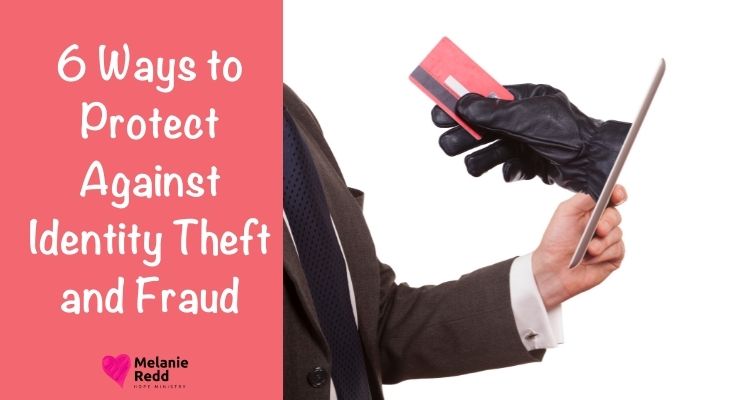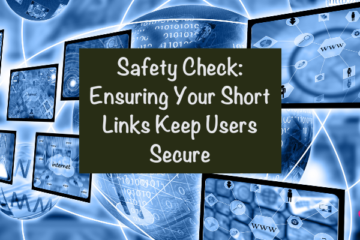6 Ways to Protect Against Identity Theft and Fraud

Identity Theft and Fraud
It’s no secret that the world is becoming increasingly digital.
As more and more of our daily lives become online, cybercriminals have taken advantage of this.
They create hundreds of different attacks targeting users’ digital identities.
These attacks can take many forms.
From phishing emails that appear to be from trusted sources to malware that infects your computer or mobile device without you even knowing.
Fortunately, learning about these different types of attacks and taking steps to protect yourself is easier than you might think.
In this blog post, we’ll highlight some of the most common types of identity theft.
In addition, we will share some practical strategies you can use to prevent them.
Keep reading to learn more about protecting against these attacks and preventing your personal information from being misused.
First… to Protect Against Identity Theft and Fraud, Create Strong Passwords.
One of the best ways to protect yourself from digital theft is by creating strong passwords.
Weak passwords are easy to guess and hack, so make sure you’re using complicated phrases that can’t be guessed easily.
Your passwords should be different for each account and include a mix of letters, numbers, symbols, and colors.
You should also avoid writing your password down in any form.
Second… to Protect Against Identity Theft and Fraud, Always Use Two-Factor Identification.
If you want to protect your accounts from potential hackers, you must enable two-factor authentication.
Two-factor authentication protects your various accounts from unauthorized access. This process requires the use of a code sent to your phone or email address and your password.
This prevents hackers from accessing your account if they get a hold of your username and password.
Third… to Protect Against Identity Theft and Fraud, Don’t Share Personal Information Online.
One of the most common mistakes people make is sharing personal information online, especially on social media.
While it may seem harmless at first, this post can make you vulnerable to several identity thefts and fraud attacks.
These attacks can take various forms.
For example, they can be phishing emails that appear to be from trusted sources.
Also, they can be malware that infects your computer or mobile device without you even knowing.
Some fairly popular examples of these attacks include fake shopping sites. These sites steal your credit card number and other personal information.
Also, some hackers access your sensitive data by infiltrating your email account.
To protect yourself against these types of attacks, always be mindful about what information you share online and how often.
If you’re not sure if it’s worth posting something, think twice before hitting the “post” button.
You should also avoid using public Wi-Fi at all costs. There are so many risks.
If you don’t want to put everything on your device at risk for cybercriminals, be careful on public Wi-Fi.
Fourth… to Protect Against Identity Theft and Fraud, Shred Documents with Personal Details.
You can protect yourself against identity theft by shredding documents with personal information.
Shredding paper is easy!
Be sure to take documents with sensitive information and use a shredding device.
This way, you will ensure the documents can’t be put back together for someone else to use.
Remember, when you shred a document, you cut it into many small pieces.
This makes it difficult for someone to use your personal information to commit fraud against you or hack into your accounts.
However, be aware of What To Shred before shredding everything.
Fifth… to Protect Against Identity Theft and Fraud, Cover Your Webcam.
The first step to protecting your digital identity is to cover your webcam.
You may be surprised to learn how easy it is for someone with malicious intent to access your computer camera. They can access the camera on your laptop, tablet, or mobile device.
Covering the camera will prevent others from hacking into your device.
Additionally, it will protect you against being viewed without you knowing.
Sixth… to Protect Against Identity Theft and Fraud, Be Aware of Phishing and Spoofing Scams.
Phishers may send you an email that appears to be from a legitimate company or person but is a scam.
This is called phishing.
Truly, it’s one of the most common ways cybercriminals attempt to steal your personal information.
Another scam is spoofing. Spoofing is replicating legitimate websites.
Spoofers call the site’s network to make it appear as if their website is down or constantly loading (also known as denial-of-service).
Once you click on a link from these sites, they may ask you to enter your credentials. Usually, they use an app or window that opens on your computer.
Malware Distribution
This type of attack is also used in malware distribution. Malware is where a malicious program masquerades as an update for software you already have.
You can protect yourself against phishing and spoofing scams. Do this by verifying the legitimacy of any emails you receive. Also before opening them and clicking any links within them, make sure they are legit.
Read carefully to see if there are any details about the sender or domain that don’t seem genuine. Watch for misspellings in the email or text-based logos instead of images.
If something doesn’t seem right, don’t open it!
Were you encouraged by what you read?
Then, would you share this article with a friend, co-worker, or family member?
Or, maybe you can send it to a friend or family member?
This blog occasionally uses affiliate links and may contain affiliate links.
Additionally, Melanie Redd is a participant in the Amazon Services LLC Associates Program.
This is an affiliate advertising program designed to provide a means for sites to earn advertising fees. These are earned by advertising and linking to amazon.com.
Also, for more on my disclosure policy, click HERE.
© Melanie Redd and Hope Ministry, 2024. Unauthorized use and/or duplication of this material without express and written permission from this blog’s author and/or owner is strictly prohibited.
Further, excerpts and links may be used, provided that full and clear credit is given to Melanie Redd and Hope Ministry.
Please give appropriate and specific directions to the original content.



0 Comments